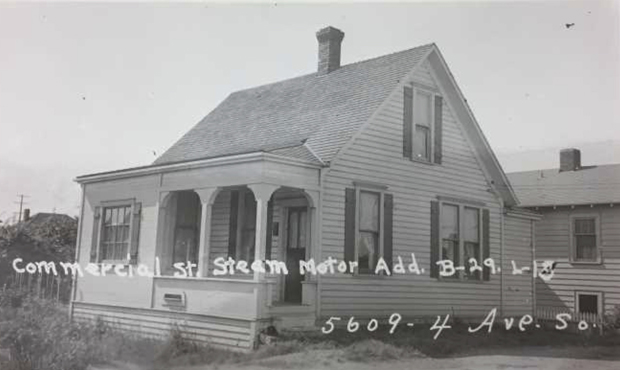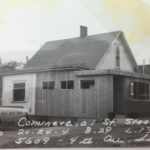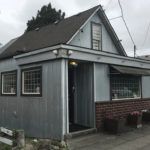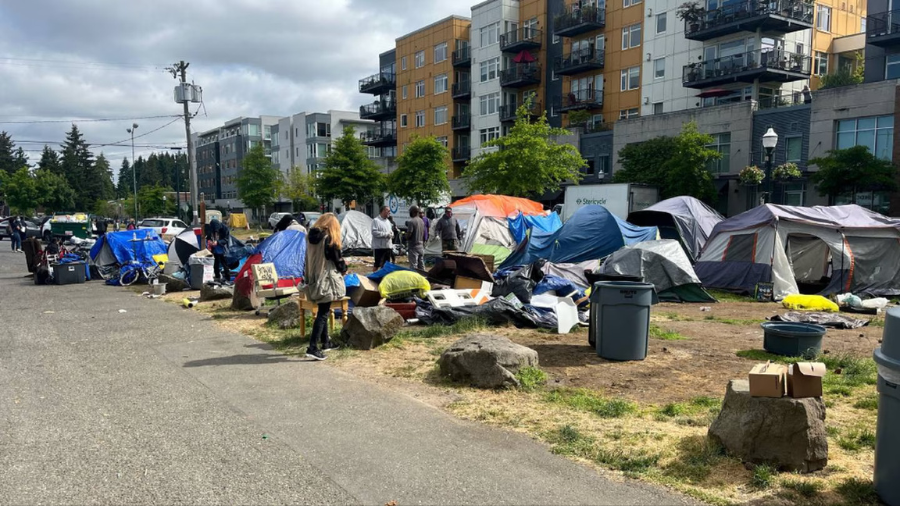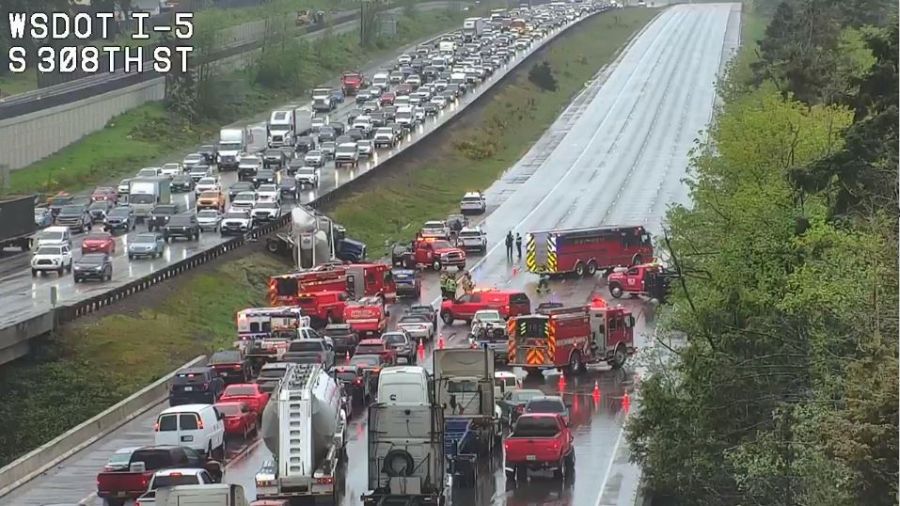Searching for Seattle’s hidden Latino history
Jun 19, 2019, 8:24 AM | Updated: 10:35 am
Just about every week in the Seattle area, it seems, there’s news of yet another iconic local theater or ornate apartment building threatened with demolition. It’s part of the deal for a booming region where people want to live and work, and where developers and investors are eager to capitalize on real estate transactions and new construction projects.
With the din of all this tearing down and building up as backdrop, some important work was recently completed to identify a specific subset of lesser-known or otherwise overlooked places where local history has unfolded over the decades.
A year-long survey of historic places Seattle and King County was recently conducted by consultants working for the Washington Trust for Historic Preservation in cooperation with the Washington State Department of Archaeology and Historic Preservation.
The goal of the survey was to identify structures and places important to Latino history, but which have largely gone overlooked compared to other more well-known and oft-told narratives of local people and places.
A total of 21 sites were identified and documented, including seven that had never before been listed in previous surveys of potential landmarks.
How Anacortes journalists shaped their town and the Northwest
Some, such as Franklin High School, were already considered landmarks and already protected, while others were deemed worthy of consideration, including Chief Sealth International High School (for association with Proyecto Saber) and Picardo House (for association with Mexican-American artist Alfredo Arreguin). A landmark nomination was already in progress for the school on Beacon Hill housing Latino community group El Centro de la Raza.
Protections for landmarks vary by jurisdiction, but landmark designation can often stop or delay a building from being demolished, or at least make it easier for a willing owner to restore and/or preserve it.
Chris Moore is executive director of the Washington Trust for Historic Preservation, the non-profit group that led the survey effort. He says that the Seattle area has a pretty good track record when it comes to historic preservation. However, much of what has been preserved — and what still tends to get public and media attention – are big and flashy buildings, or buildings with well-known architectural pedigrees, or that are associated with famous people.
Even the Washington Trust, Moore acknowledges, is headquartered in a very stately structure: The Stimson-Green Mansion on First Hill.
Moore says he and his colleagues are proud to call the Stimson-Green home, but he says making all communities stronger is what inspired him to work in historic preservation, and there’s much more to our local cultural history and to all our communities than just the famous places and mansions.
“Those buildings are representative, typically, of just a single narrative in our nation’s past,” Moore said last week. “And so, when you start to dig in and try to find those sites that are associated with stories of other communities, stories of lesser known events and people, they’re not the grand mansions, necessarily, they’re not the big civic buildings, they’re not the wonderful commercial towers or hotels, they’re community clubs, they’re churches, and sometimes those are in nondescript buildings.”
The origins of Seattle’s Latino community
One of those “other communities” are Latinos, who began arriving in the Seattle area in large numbers during World War II, with the majority migrating from places like Wapato and Sunnyside in the Yakima Valley to take wartime manufacturing jobs.
With funding, in part, from the National Park Service as part of a national initiative to explore lesser-known history, and with support from the Washington Department of Archeology and Historic Preservation, the Washington Trust hired architectural consultants to identify places related to Latino history that might be worth considering for landmark designation.
Susan Johnson is with a company in Tacoma called Artifacts. She was one of a pair of consultants who led the survey, which required almost starting from scratch.
“The census data isn’t very helpful,” Johnson said, explaining that prior to 1970, Latinos weren’t counted separately by the Census Bureau. “You have to rely on anecdotes and oral histories and looking through newspapers,” to track down information about places and structures that might have some connection to local Latino history, but that haven’t been written about by historians or museums.
Johnson compares her work over the past year to similar efforts others have made in the past to explore hidden aspects of American history.
“I went to a conference years ago and listened to a panel about under-represented stories [and] how to research invisible stories like the Underground Railroad,” Johnson said.
“Something that wasn’t documented,” Johnson asked. “How do you find out about it now, when there’s no written record of it? You have to get creative. I feel like Erasmo was doing that for us for this project. Even though it’s fairly recent history, it’s already sort of unknown.”
The “Erasmo” Susan mentioned is University of Washington Professor Emeritus Erasmo Gamboa.
Dr. Gamboa is in his late 70s. He grew up in Sunnyside and came to Seattle to enroll at the University of Washington along with a group of other Mexican-American students in 1968. He is of Mexican ancestry, and he served as Project Historian for the survey.
Barron’s Barbershop
Susan Johnson says that one of the places that Dr. Gamboa discovered – by stumbling across mention of it in an old advertisement years ago – was called Barron’s Barbershop.
Johnson says a gentleman named Manuel Barron, who had moved to the Seattle area from the Yakima Valley after World War II, opened the barbershop on 4th Avenue South and South Lucille Street in the 1950s, in an old house that had originally been built in 1901.
Erasmo Gamboa ultimately met and interviewed Manuel Barron, who has since passed away. Dr. Gamboa says you could always get a haircut at Barron’s Barbershop, but because of what Manuel Barron did for the community, Latinos could also get so much more.
“The barbershop [was] a barbershop, but it [was] also a political hub,” Dr. Gamboa said earlier this week. “Barron is one of the early shaker and movers. He’s very instrumental in organizing one of the early, early Latino organizations called the Latino Social Club.”
The organization Barron founded is important, Dr. Gamboa says, because it coordinated social events like dances and colorful civic celebrations like crowning a princess each year, not unlike the larger and much more well-known Seafair celebration that began in Seattle around that same time.
Barron’s club did some other pretty important things, too, according to Dr. Gamboa.
“They advocated for the rights of Latinos in the Latino community that [was] beginning to emerge in the Seattle area [after World War II],” Dr. Gamboa said.
This history is personally important to Dr. Gamboa, who sees a connection between the 20th century migration of Mexican-Americans to the Northwest and the Mexicans who earlier served as crewmembers aboard the Spanish ships that explored these waters in the 18th century.
Verdict restores historic cross-border Native hunting territory
In addition to serving as project historian, Dr. Gamboa is also closely involved with a new museum that will open later this year. It’s called The Sea Mar Museum of Chicano/a/Latino/a Culture, and is located in Seattle’s South Park neighborhood. The museum is an offshoot of Sea Mar, a community health care organization founded in the mid 1970s, of which Dr. Gamboa is a member of the executive board.
As Gamboa describes it, Barron’s Barbershop was a key part of the growth and development of the Latino community in Seattle in the 1950s and early 1960s, which was largely centered around South Park, Burien, and White Center.
Later, during the Civil Rights and Vietnam protest era, and then the era of farmworker activism, says Gamboa, places like Barron’s and organizations such as the Latino Social Club came to be viewed by younger Latinos as outmoded; the times required more immediate and more direct action. Organizations like Sea Mar and El Centro de la Raza, then, are part of a continuum stretching back to the Latino Social Club’s humble roots amidst scissors and shaving cream.
Barron’s today
And though Barron’s Barbershop closed a long time ago, the little house is still standing on 4th Avenue South near South Lucille Street. It’s the very embodiment nondescript. To Washington Trust director Chris Moore’s point, the 1901 house with its mid-century modifications does not qualify as a grand mansion; the structure does not look like a “landmark,” and anyone driving or walking by would have no idea of its importance to local Latino history.
In fact, a check on Tuesday with the current tenant, a manufacturing business, revealed that the people working there had never heard of Barron’s Barbershop or the Latino Social Club founded by Manuel Barron. Still, looking into the front room of the building, it’s easy to imagine where the barber chairs likely stood.
Susan Johnson, the consultant who worked on the survey, says that the unfortunate reality is that the old Barron’s building — and other similarly non-descript or modified structures where culturally important things happened — probably wouldn’t qualify as landmarks under current standards.
“Maybe they wouldn’t stand out for their architecture, but if you look at Barron’s Barbershop and think, ‘Oh wow, this is where people were exchanging stories, and this was a safe place back in the early 1950s when there probably was even more racism than there is nowadays,’” more people would understand the value of preserving even a non-descript place, Johnson said.
“Buildings that are changed, that don’t have intact windows, or their floor plan has changed, or their siding has changed, those can get disqualified to be landmarks [because of those changes],” Johnson said.
So, Johnson says, Barron’s Barbershop and other similar places won’t be recognized as official landmarks “until we value the story more than we value the material aspect.”
Chris Moore of the Washington Trust agrees with Johnson’s assessment. He says that, in general, non-descript, modified places like Barron’s “haven’t been the building types that are sought after for landmark designation.”
But Chris Moore is optimistic, especially about the potential for community-building in preservation of landmarks such as those uncovered in the Latino survey.
“We’re getting better and rightfully so, and it’s been far too long,” Moore said. “But I think we’re getting better at understanding [that] the social history of places and the communities they represent are really what imbues these places with their overall significance, and so we’ve gotta find those touchstones, those landmarks, [in] other communities as well.”
“This is truly a local level of preservation,” Moore said.

